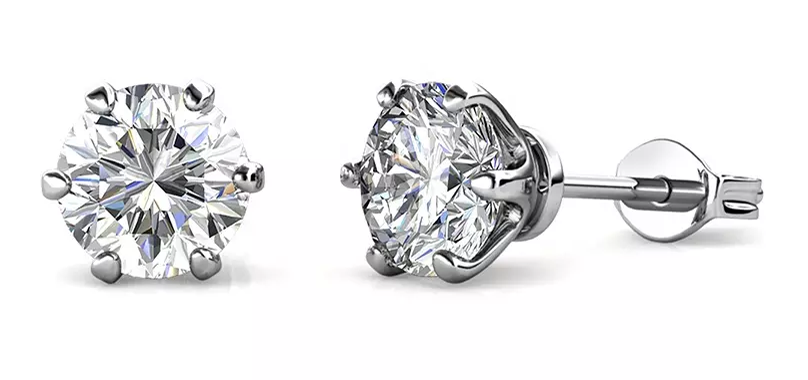Turquoise Education
Learn More About the Turquoise Gemstone
Turquoise is an opaque mineral that occurs in beautiful hues of blue, bluish green, green, and yellowish green. Turquoise is found in only a few places on earth: dry and barren regions where acidic, copper-rich groundwater seeps downward and reacts with minerals that contain phosphorus and aluminum. The name Turquoise is derived from the French, pierre turquoise, meaning “Turkish stone,” because the trade routes that brought Turquoise to Europe from the mines in central Asia went through Turkey, and Venetian merchants often purchased the stone in Turkish bazaars. For thousands of years, Turquoise has spanned all cultures, prized as a symbol of wisdom, nobility and the power of immortality. Among the Ancient Egyptians, Persians and Chinese, Aztecs and Incas of South America, and Native North Americans, Turquoise was sacred in its adornment and for power, luck, and protection.
Cut
Turquoise has a unique structure called triclinic with patterns and minimal symmetry. All three-dimensional objects are spatially viewed on three axes. Most structures have at least two angles that are symmetrical across these axes, but in the case of triclinic structure, there is a different angle at every axis.
Turquoise is most often fashioned as a cabochon. The smoothly rounded dome shape sets off turquoise’s color, texture, and any matrix beautifully. In addition, manufacturers and artisans fashion turquoise rough into round or oblong beads for strand necklaces, and into small, flat pieces that are popular in jewelry inlays. Some top-color blue turquoise is engraved with Persian or Arabic inscriptions, inlaid with gold. Other rough material might be tumbled into “nuggets"
Color
Turquoise can rarely be found in the color blue, capturing the attention of the gemstone market. Sky blue is the most desirable color markets seek. Turquoise blue gemstones can change color due to iron imparts a green tint to the turquoise in proportion to its abundance. The color of turquoise might also be altered by small amounts of iron or zinc substituting for copper in the turquoise structure. Other colors consumers often seek are greenish blue, and some also take interest in avocado and lime green turquoise colors.
|
Eilat stone |
A greenish-blue mixture of chrysocolla, turquoise and malachite or other copper minerals, which is mined from copper mines near Eilat, Israel. |
|
Kingman turquoise |
Good colored turquoise from the Mineral Park Mine, near Kingman, Arizona. |
|
Navajo turquoise |
Turquoise that comes from South West America with brown or black veins. |
|
Persian turquoise |
Iranian turquoise of high quality that tends to be pure sky-blue in color. |
Clarity
Turquoise can be semi translucent, ranging from light to medium blue and greenish blue. Veins are often a feature seen running through this gemstone, with a waxy to matt luster. Spiderweb turquoise contains fine seams of matrix that form unique web inspired patterns. Translucent turquoise is the most desirable form due to the purity and no veins. Sometimes veined turquoise can create beautiful patterns, such as “spider web turquoise”.
Carat
Turquoise is often broken into smaller chunks for jewelry after it’s mined in large slabs. This beautiful gemstone comes in a variety of sizes, with 4-8 carat stones working best for creating jewelry. Larger stones would be more favorable for ornamental pieces. The average pricing for turquoise can vary greatly but usually averages around $30 to $40 carat for a quality turquoise piece.
|
Gem grade and rare |
Average $40 per carat |
|
Very high grade |
$10 to $20 per carat |
|
High to average grade |
$5 to $7 per carat. |
|
Average grade |
about $2 to $5 per carat. |
|
Stabilized grade |
$.4 to $3 per carat, the price of stabilized turquoise most times depend on the metal it is on. |
Shape
Turquoise comes in a variety of forms and creates beautiful jewelry pieces and sculptures, as seen through history. Well-known forms of this gemstone are rings, earrings, bracelets and pendants. A combination of micro crystals formed creates the turquoise gemstone. Finding a well-formed crystal can be difficult. This gemstone forms best in arid regions, which is why it is so often found in Mexico, China, Chile, Egypt, Iran, and the southwestern United States.














